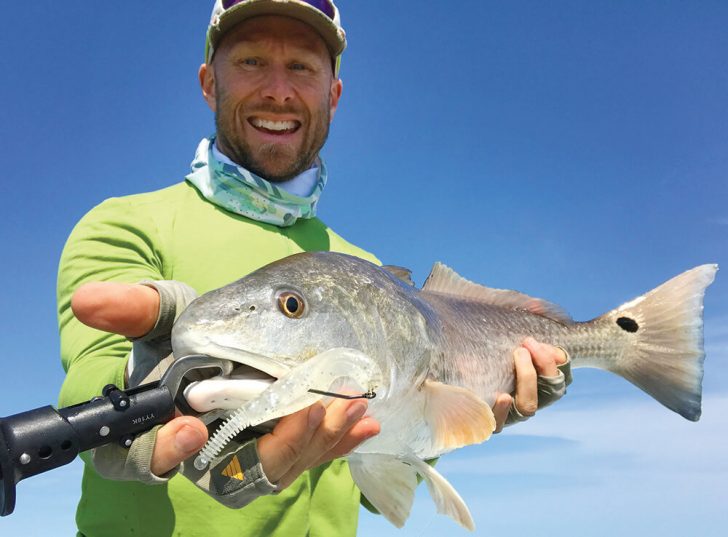It’s summertime, and shallow-water fishing for reds is kicking off this month. It will last through mid-October on the Atlantic Coast, and to mid-February along the Gulf Coast. Before you “see” your first tailing redfish, you really feel like everyone is just making this up. You see nothing during an eight our shallow-water expedition, and others come back speaking of tails, “… like a used car lot, flags everywhere,” as Capt. Chuck Uzzle of Orange, Texas would say.
But why aren’t you seeing this?
There are several factors involved in seeing tailing redfish, redfish swimming in shallow water; they are not easy to see. If you are fishing shallow seagrass, marsh or even flooded spartina marsh in areas where redfish roam and you’re doing it during a season when shrimp are abundant in those areas, then there are tailing redfish there. Let’s take a look at what you should be looking for with your eyes.
Both Capt. Steve Soule of Galveston, Texas and Chuck McKinney of Portland, Texas say you should be looking for the horizontal line of the redfish’s back. Everything in the marsh and on seagrass flats tends to be either vertical or irregular shaped. The grass is vertical, potholes are irregular, even oyster reef edges are irregular. See a redfish cruising the flats, and the first thing you will notice is the horizontal line of it’s back. A good pair of Costa 580g lenses is what you want for this. The only difference between cruisers and tailers is that the tailer is probably nosed down into the mud and a little bit of his tail is sticking out of the water. You’ll probably only see a little dark triangle at the end of the horizontal line of the redfish’s back. You typically won’t see the big blue tail and black dot rising out of the water waving at you like a little red flag back and forth. So begin to look for the horizontal line, the small triangle, and the glow of coppery orange. This should help you to see what’s been in front of you all along.
Let’s talk about something else here that’s also a problem for most people. These environments are very grassy, and throwing an open-throated jig head during summer low tides is asking for trouble. Might as well go ahead and throw the lunch salad on a hook, because that’s all that fish is going to see. You have to throw something weedless that you can cast accurately, no matter the wind, something that can get the fish’s attention with action or accuracy, and sinks naturally so they can’t pass up such an easy meal. The troutsupport.com lure solves many of the frustrations sight casters have to put up with. Both reds and speckled trout love it. It casts far and accurately, walks the dog, wobbles like a big slow spoon, but is buoyant enough to sink slowly right in the fish’s face.
Tobin created TroutSupport.com to help anglers develop their abilities by learning what to look for on the water.
